
Diabetes is one of the most common diabetes that tends to increase morbidity and disrupt disease statistics.The symptoms of diabetes are not on the same day, and the process flows for a long time as endocrine exchange diseases increase and intensify.Yes, the debut of Type I diabetes is significantly different from the early stages of Phase II.
Throughout the endocrine pathology, diabetes confidently holds the championship, accounting for more than 60% of all cases.In addition, disappointing statistics show that 1/10 of the "diabetic patients" are children.
The likelihood of access to the disease increases with age, so the number of this group doubles every time.This refers to an increase in life expectancy, improved early diagnosis, decreased physical exercise and an increase in the number of people with excessive weight.
Types of diabetes
Many people have heard of this disease, such as non-diabetics.Therefore, readers will not then confuse the disease with the name "diabetes" and may clarify the differences.
Non-Adal urethra
Non-fitness diabetes is an endocrine disease caused by neurological diseases, inflammatory diseases, tumors, toxicity, and the complete disappearance of ADG-vasopressin (antitrophin).
This explains the clinical situation of the disease:
- Continuous dryness of oral mucosa, incredibly thirsty (one can drink up to 50 liters of water in 24 hours, extending the stomach to a large size);
- Distribute large amounts of unconditional light urine with low specific gravity (1000-1003);
- catastrophic weight loss, weakness, decreased physical exercise, digestive disorders;
- Changes in the characteristics of the skin (“parchment” skin);
- The atrophy of muscle fibers, muscle weaknesses;
- Dehydration syndrome develops without fluid intake for more than 4 hours.
The prognosis of a completely cured disease is poor and the performance is greatly reduced.
Short anatomy and physiology
Non-IRE organs - The pancreas performs mixed secretion functions.Its exogenous part is exocrine, producing enzymes involved in the digestive process.The endocrine part entrusts the mission of endocrine secretions to engage in the development of various hormones, includingInsulin and glucagon.They are the key to ensuring the constant sugar in the human body.
The endocrine part of the glands represents the Langney Islands, by:
- Cells A occupy a quarter of the entire island space and are considered to be the location of glucagon products;
- B cells occupy up to 60% of the cells that combine insulin and accumulate insulin. The molecules are polypeptides of two chains, and the chain has a certain sequence of 51 amino acids.
- D cells that produce somatostatin;
- Cells that produce other polypeptides.
Therefore, the conclusion implies itself:In particular, damage to the pancreas and islands in the Langone Islands is the main mechanism that inhibits insulin production and triggers the development of pathological processes.
Types and special forms of diseases
Lack of insulin can lead to violation of sugar constant invasion (3.3-5.5 mmol/L)And helps to form a heterogeneous disease called diabetes (diabetes):
- No insulin (absolutely lacking) formInsulin dependenceA pathological processType I diabetes (ISD);
- Insulin deficiency (relatively lacking), triggering behaviors that violate carbohydrate metabolism in the initial stage, slowly and surely lead to developmentInsulin dependenceDiabetes (INZSD), known asType II diabetes.
Due to physical violations of glucose utilization, an increase in its serum (hyperglycemia) is (in principle) a manifestation of the disease, i.e., a sign of diabetes, i.e., over time, the total metabolic process of metabolic processes at all levels begins to appear.
In addition to the first and second types of diabetes, there are also differences in the special types of the disease:
- Secondary diabetes,Pancreatic (pancreatitis), malignant tumors in the gland parenchyma, and cirrhosis.Many endocrine diseases, accompanied by the overproduction of insulin antagonists (Assin, Cushing's disease, phosphocytoma, thyroid disease) lead to the development of secondary diabetes.Many drugs consumed for a long time have diabetes-generating effects: diuretics, some antihypertensive drugs and hormones, oral contraceptives, etc.
- Diabetes (pregnancy),Due to the peculiar interactions between mother, child and placenta.The fetal pancreas that produces its own insulin begins to lower the product of insulin with the maternal gland, resulting in this special form during pregnancy.However, with proper control, gestational diabetes usually disappears after delivery.Subsequently, in some cases, this fact may threaten the development of type II diabetes in women with a similar history of pregnancy (within 6-8 years).
Why are there "sweet" diseases?
"Sweet" disease forms a rather "variety" group of patients, so it is clear that the genes of ISSD and its insulin-dependent "corresponds" appear differently.There is evidence that the link between insulin-dependent diabetes and the genetic structure of the HLA system (the main complex of histocompatibility), especially with certain genes in the D region.For INZSD, no such relationship was seen.
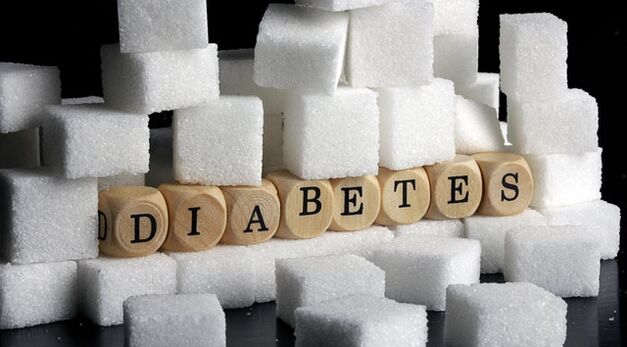
To develop a type of genetically susceptible type of diabetes, the pathogenic mechanism is triggered by initiating factors:
- Congenital inferiority complex of pancreatic islets in Langney Islands;
- Adverse effects of the external environment;
- stress, nerve load;
- Brain injury;
- Pregnant;
- infectious processes of the origin of the virus (influenza, “pig”, cytomegalovirus infection, coksaki);
- The tendency of continuous overeating leads to excessive fat deposition;
- Abuse of candy (there is a greater risk of loving sweets).
Before shedding light on the causes of type II diabetes, it is recommended that you discuss a very controversial question: Who often suffers from men or women?
It has been determined that the disease is now more common in women, although in the 19th century SD was a "privilege" for men.By the way, the presence of this disease in men is now considered to be the primary in some countries in Southeast Asia.
The inducing conditions that can be attributed to type II diabetes:
- Due to the inflammation process and the occurrence of cysts, tumors, bleeding, changes in the structure of the pancreas;
- Age after 40;
- Excessive weight (the most important risk factor for INZSD!);
- Vascular diseases caused by atherosclerosis and arterial hypertension;
- In women, pregnant and high-weight children are born (over 4 kg);
- The presence of relatives suffering from diabetes;
- Strong psychological and emotional stress (heightening of the adrenal glands).
In some cases, the causes of various types of diabetes are coincident (stress, obesity, influence of external factors), but the process of the first and second types of diabetes begins differently, in addition,ISSD is children and young, insulin-dependent people who prefer older people.
Why do you drink so much?
Regardless of the form and type, the characteristics of diabetes can be expressed in the following form:
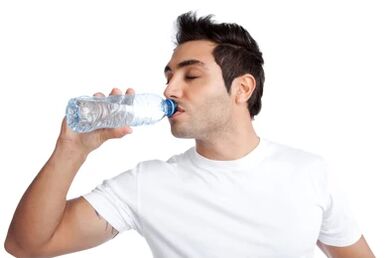
- Dry sticky oral;
- Thirst, almost insatiable, is associated with dehydration;
- Excessive urine formation and its release by the kidneys (Polyuria), resulting in dehydration;
- Sugar caused by insulin deficiency inhibits sugar disposal and inhibits serum glucose concentration (hyperglycemia);
- The occurrence of sugar (glucose) and ketone bodies (ketouria) in the urine is usually present in trivial quantities, but the production of diabetes in the liver is strongly produced by the liver and is detected in the urine when excreted from the body.
- Increased plasma (except glucose) of urea and sodium ions (NA+);
- Weight loss (in the case of decompensation of the disease) is a characteristic of catabolic syndrome, which develops due to glycogen, lipolysis, fat (mobilization), catabolic and glucose (conversion to glucose).
- Violation of indicators of lipid spectrum, due to LDL fraction, NezhK (undilated fatty acid), triglycerides, general cholesterol increase in lipid spectrum.The lipid content continues to increase, and begins to actively enter the liver, where there is strong oxidation, resulting in excessive formation of ketone bodies (acetone + β-oxidized oxide + acetic acid) and further into the bloodstream (Hyperketoninomia).Excessive concentration of ketones threatens a dangerous stateDiabetic ketoacidosis.
Therefore, the general signs of diabetes can be a characteristic of any form of disease, but in order not to confuse the reader, attention should still be paid to the characteristics inherent in this or the type.
Type I Diabetes - Young "Privacy"
ISD is characterized by the beginning (weeks or months).The signs of type I diabetes are evident and manifested by the typical clinical symptoms of the disease:
- The weight dropped sharply;
- An unnatural thirst, a man cannot get drunk at all, despite his attempt to do this (polledipsy);
- A large amount of urine secretion (polyuria);
- Significant excess of glucose and ketone concentrations in serum serum (ketoacidosis).In the initial stages, diabetes (ketoacid, hyperglycemia) may develop coma when the patient may still be unaware of his problem - a disease that is extremely life-threatening, so prescribe insulin treatment as early as possible (diabetes only accelerates diabetes).

In most cases, after insulin is used, the metabolic process is compensated.The body's demand in insulin has dropped sharply, and a temporary "recovery" has come.However, this short-term relief should not relax the patient or doctor, because after a period of time the disease will remind yourself again.As the duration of the disease increases, the demand for insulin may increase, but basically, in the absence of ketoacidosis, it does not exceed 0.8-1.0 units/kg.
Signs that advanced complications of diabetes (retinopathy, nephropathy) may occur within 5-10 years.The main reasons for fatal results of ISD include:
- End-stage renal failure, which is the result of diabetic glomerulosclerosis;
- Cardiovascular disease is a complication of basic diseases and the kidneys occur less frequently.
Disease or age-related changes?(Type II Diabetes)
INZSD has been in development for months or even years.The problem arises is that one person carries various experts (dermatologists, gynecologists, neurologists...).The patient did not suspect that the disease seemed different in his opinion: intense disease, itchy skin, fungal lesions, lower limb pain - signs of type II diabetes.Patients are used to the condition and diabetes continues to develop slowly, affecting all systems, mainly blood vessels.
INZSD is characterized by a stable slow process without showing a tendency to ketoacidosis.
Treatment of type 2 diabetes usually starts with diet, limits the limitations of easy digestion (refined) carbohydrates and uses (if necessary) reduced medications.If the disease progresses to a stage of severe complications, or if the immunity of oral medications is present, insulin should be prescribed.
The main cause of death in INZSD patients is considered a cardiovascular pathology and has become the result of diabetes.Usually, this is a heart attack or a stroke.
Diabetes treatment products
The basis of medical measures aimed at compensating diabetes is three main principles:
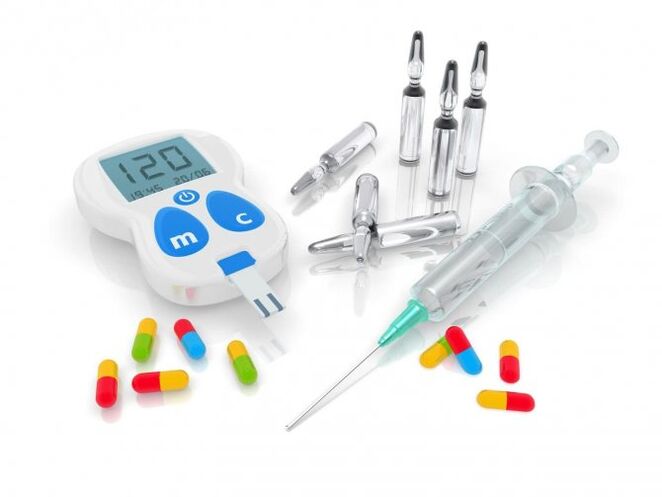
- Compensate for insulin deficiency;
- Regulate endocrine-exchange diseases;
- Prevent diabetes, its complications and timely treatment.
The implementation of these principles is carried out according to 5 main positions:
- Diabetic nutrition is allocated as the party that “first violin”;
- After eating, a sufficient and individually selected physical exercise system was performed;
- Sugar-reducing drugs are mainly used to treat type 2 diabetes;
- Insulin treatment is required for INZSD, but it is the main one in the case of type 1 diabetes.
- Teach patients for self-control (the skill of sucking blood from fingers using a sugar meter, introducing insulin without external help).
Laboratory control over these positions demonstrates the degree of compensation after the following biochemical studies:
| index | Good compensation | Can sit | Bad |
|---|---|---|---|
| Glucose levels on fasting (mmol/l) | 4.4-6.1 | 6.2-7.8 | Ø7.8 |
| The sugar content in the serum after 2 hours of eating (mmol/L) | 5.5-8.0 | 8.1-10.0 | Ø10.0 |
| Percentage of glycosylated hemoglobin (HBA1, %) | <8.0 | 8.0-9.5 | Ø10.0 |
| Index of total cholesterol in serum (MMOL/L) | <5.2 | 5.2-6.5 | Ø6.5 |
| Triglyceride level (mmol/L) | <1.7 | 1.7-2.2 | Ø2.2 |
The important role of diet in the treatment of INZSD
The nutrition of diabetes is very well known - even far from people's diabetes, Table 9.At the time in the hospital, you could hear about the special nutrition that was always in a separate pot, unlike other diets, and after some passwords it would be: “I have the ninth table”.what does that mean?What is the difference between this mysterious diet for everyone else?
You should not be misunderstood that the “porridge” of the diabetic patient who cared for him was deprived of all the joys of life.A diabetic diet is no different from a diet that a healthy person receives from nutrition, moderate amounts of carbohydrates (60%), fat (24%), protein (16%).
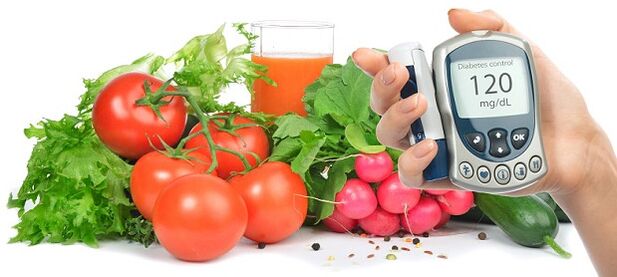
The power supply for diabetes includes replacing refined sugars in products with slowly split carbohydrates.Sugar is sold for everyone in the store, and candy-based candy falls under the category of prohibited foods.
As for nutritional balance, everything here is strict: diabetes must be mandatory to use the required amount of vitamins and pectin, at least 40 grams.every day.
Strict personal physical exercise
The attending physicians selected each patient's physical activity separately, considering the following positions:

- age;
- Symptoms of diabetes;
- the severity of pathological processes flow;
- There are or are no complications.
Physical activities that doctors prescribe and are conducted by the “wards” should promote the “burning” of carbohydrates and fat without attracting involved insulin.Its dosage is to compensate for the necessary dose of metabolic disease, which is obviously falling and should not be forgotten because by preventing blood sugar from increasing, you may have adverse effects.Enough physical activity can reduce glucose, insulin dose decomposition is introduced, and therefore, sugar levels decrease the allowable value (hypoglycemia).
therefore,The dosage of insulin and physical exercise requires very close attention and thorough calculations.To complement each other, do not step on the lower boundaries of normal laboratory indicators.
Or try civil remedies?
Treatment of type 2 diabetes is often accompanied by patients with folk therapies that can inhibit the process and delay the dosage form as much as possible.
Without considering the fact that our distant ancestors hardly knew the disease, there are folk remedies for diabetes, but we should not forgetInjection and debris prepared from various plants are adjuvants.Using household medication for diabetes does not relieve patients from diet, control their blood sugar, visit their doctors and fulfill all recommendations.

To combat this pathology at home, quite famous folk remedies were used:
- bark and white mulberry leaves;
- Cereals and peeled oats;
- walnut partition;
- bay;
- Cinnamon;
- acorns;
- nettle;
- Dandelion.
When diet and folk remedies no longer help...
The first generation of So-promoted preparations, widely known at the end of the last century, remained in memoirs and were replaced by a new generation of drugs that constitute the three major diabetes groups produced by the pharmaceutical industry.
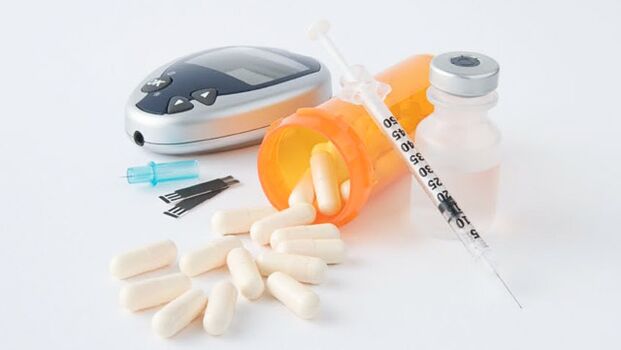
What method is suitable for one or another patient - the endocrinologist decides.Therefore, patients will not train themselves on their own and will not decide to use these drugs for diabetes as appropriate, and we will provide several visual examples.
Derivatives of sulfonyl mocevin
Currently, the derivative of the second generation of sulfonamide is specified, from 10 hours to one day.Usually, patients take it twice a day for half an hour.
These drugs are absolutely contraindicated in the following situations:
- Type 1 diabetes;
- Diabetes, high quality, lactic acid coma;
- Pregnancy, childbirth, lactation;
- Diabetic nephropathy, accompanied by impaired filtration;
- Leukocytes (leukopenia) and thrombocytopenia links (thrombocytopenia) and platelet hematopoietic diseases, and leukocytes (leukopenia) diseases are reduced.
- Severe infectious and inflammatory liver disease (hepatitis);
- Diabetes are complicated by vascular pathology.

In addition, the use of drugs in this group may threaten the development of allergic reactions displayed:
- itching and urticaria, sometimes reaching edema in Kunkek;
- Digestive diseases;
- Changes on the blood side (reduced platelet and leukocyte levels);
- Perhaps it violates the liver's functional capacity (jaundice caused by cholestasis).
Sahabro - Biguanides family holding facilities
Biguanides (guanosine derivatives) are actively used to treat type 2 diabetes, where sulfonamide is usually added.They are very reasonable for obese patients, but patients with liver, kidney and cardiovascular pathology are severely restricted, turning to more retention drugs in the same group or alpha-glucose inhibitors that inhibit carbohydrate absorption in the small intestine.
Absolute contraindications to consider using Biguanides:
- ISD (Type 1 Diabetes);
- Significant weight loss;
- Regardless of how localization contagious the process;
- surgical intervention measures;
- pregnancy, childbirth, breastfeeding period;
- Coma;
- liver and kidney pathology;
- Oxygen starvation;
- Microvascular disease with visual impairment and renal function (2-4 degrees);
- Nutritional ulcers and necrosis processes;
- Due to various vascular pathology, the lower limbs violate blood circulation.
Insulin therapy
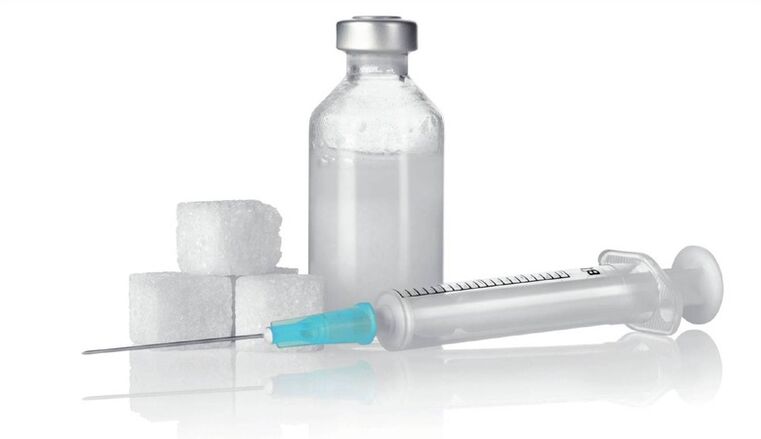
From the above, the above has become this factInsulin use is the primary treatment for type 1 diabetes, all emergencies and severe complications of diabetes.INZSD requires the appointment of this therapy only in the case of insulin use forms, and other methods do not give appropriate effects.
Modern insulin, known as single capacity, represents two groups:
- The single functional pharmacological forms of human insulin substances (semi-synthetic or DNA-core groups) are undoubtedly of significant advantages over pork preparations.They have few contraindications and side effects;
- Monoenergic insulin obtained from the pancreas of pigs.These drugs require an increase in drug dosage by about 15% compared to human insulin.
Diabetes is a dangerous complication
Because diabetes is accompanied by damage to many organs and tissues, it can be found in almost all body systems.Complications of diabetes were considered:
- Pathological changes in the skin: Diabetic skin diseases, fat necrosis, pleura, xanthoma, skin fungal lesions;
- Bone joint disease:
- Diabetic osteoarthritis (changes in joints-ankle joints), which occur in the context of a violation of microcirculation and nutritional disorders, accompanied by dislocation, subluxis, spontaneous fissures before formationDiabetic feet;
- Diabetic hybrid disease, characterized by stiff joints in the hands, is more common in children with diabetes.
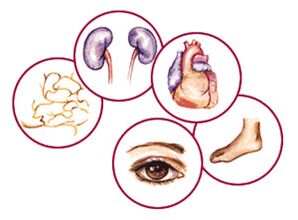
- Respiratory Diseases: Long-termLong-term bronchitis, pneumonia,,,,,Increase the frequency of tuberculosis development;
- Pathological processes affecting digestive organs:Diabetic enteropathyAccompanied by peristalsis, increased diarrhea (up to 30 times a day), weight loss;
- Diabetic retinopathy- One of the most serious complications characterized by damage to the visual organs;
- The most common complications of diabetes are consideredDiabetic neurological diseaseAnd its diversity -Multiple neuropathyReach 90% of all forms of this pathology.The commonly found diabetic polyneuropathy isDiabetic foot syndrome;
- In most cases, the pathological state of the cardiovascular system is the cause of death from diabetes.Hypercholesterolemia and vascular atherosclerosis, which begins to develop as diabetes becomes young, inevitably leads to heart and vascular diseases (coronary heart disease, myocardial infarction, heart failure, heart failure, cerebrovascular disease disorders).
prevention
Measures to prevent diabetes are formulated based on the reasons for their resistance.In this case, it is recommended to talk about preventing atherosclerosis, arterial hypertension, including the struggle with overweight, bad habits and food addiction.
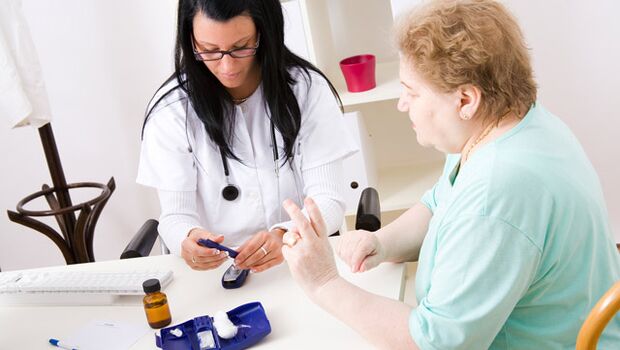
Preventing complications of diabetes is to prevent the development of pathological conditions caused by diabetes itself.Correcting glucose in the serum, following diet, adequate physical exercise, implementing doctor's advice will help drive the consequences of this rather powerful disease.



















